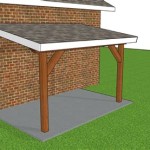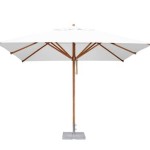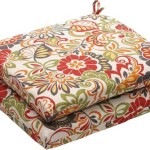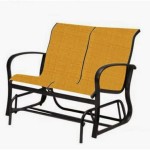Creating Custom Cushions for Patio Furniture: A Comprehensive Guide
Patio furniture cushions are essential for optimizing the comfort and aesthetic appeal of outdoor living spaces. Over time, however, these cushions can become worn, faded, or simply outdated. Rather than replacing the entire patio set, crafting custom cushions offers a cost-effective and personalized solution. This approach allows homeowners to select preferred fabrics, customize dimensions, and tailor the cushions to complement their existing decor.
The process of making patio furniture cushions involves several key steps, from initial planning and material selection to precise cutting, sewing, and finishing. Understanding these steps thoroughly ensures a final product that is both durable and visually appealing, capable of withstanding the elements while providing lasting comfort.
Planning and Preparation: Laying the Foundation for Success
Before commencing any fabrication, careful planning is paramount. This stage encompasses several critical decisions that will influence the final outcome. The first consideration is determining the number and size of cushions required. This involves accurately measuring each piece of furniture that will require a cushion. Dimensions should be recorded precisely, accounting for any curves or angles in the furniture frame. It is also beneficial to take photographs of the existing furniture to reference details during the construction process.
Next, the desired style of the cushions must be considered. Will they be simple square or rectangular cushions, or will they incorporate more complex features such as piping, tufting, or attached ties? The chosen style will impact the complexity of the pattern and the amount of fabric required. Simple cushion designs are easier for beginners, while more elaborate designs demand intermediate to advanced sewing skills.
Once the size and style are determined, material selection is the next step. This includes choosing both the fabric and the filling material. The fabric must be suitable for outdoor use, possessing properties such as water resistance, UV resistance, and fade resistance. Acrylic fabrics, such as Sunbrella, are a popular choice due to their durability and weather resistance. Other options include olefin fabrics and solution-dyed polyester, which also offer good performance in outdoor environments.
The filling material plays a crucial role in the comfort and longevity of the cushions. Options include polyurethane foam, polyester fiberfill, and shredded foam. Polyurethane foam offers good support and retains its shape well, but it can be susceptible to water damage if not properly protected. Polyester fiberfill is less expensive and dries quickly, but it may flatten over time. Shredded foam offers a good balance of comfort and durability, and it can be easily customized to the desired density.
Finally, gather all the necessary tools and supplies. Essential tools include a sewing machine, scissors, measuring tape, ruler or straight edge, fabric marker or chalk, pins, and a seam ripper. Additional supplies will include thread, zippers or Velcro for closures (if desired), piping cord (if using), and any other decorative embellishments. Having all these items readily available before starting the project will streamline the process and minimize interruptions.
Fabrication: Cutting, Sewing, and Assembly
With the planning phase complete and all materials gathered, the fabrication process can begin. The first step is to create a pattern based on the measurements taken earlier. For simple square or rectangular cushions, the pattern can be a straightforward rectangle that matches the desired dimensions of the finished cushion. For more complex shapes, it may be necessary to create a paper or cardboard template to ensure accurate cutting.
Once the pattern is created, it is time to cut the fabric. Lay the fabric flat on a large, clean surface and place the pattern on top. Secure the pattern with pins or weights to prevent it from shifting. Using sharp scissors or a rotary cutter, carefully cut the fabric along the edges of the pattern. Remember to add seam allowances to all edges of the fabric. A standard seam allowance of 1/2 inch is generally sufficient, but this can be adjusted based on the desired seam finish. It is essential to cut multiple fabric pieces for the cushion's top, bottom, and sides.
With the fabric pieces cut, the next step is to sew them together. Start by pinning the fabric pieces together, ensuring that the right sides of the fabric are facing each other. Use a straight stitch on the sewing machine to sew the pieces together along the seam lines. If using piping, insert the piping cord between the fabric layers and sew it in place along the perimeter of the cushion. Backstitch at the beginning and end of each seam to secure the stitches.
Leave a portion of one seam open to allow for stuffing the cushion. Turn the cushion cover right side out and carefully stuff it with the chosen filling material. Ensure that the filling is evenly distributed throughout the cushion to prevent lumps or unevenness. Once the cushion is fully stuffed, close the opening with a hidden stitch or by inserting a zipper or Velcro closure. Zippers provide a more secure closure and allow for easy removal of the cushion insert for cleaning.
If the cushion design includes ties or other decorative elements, these should be attached at this stage. Ties can be made from matching fabric and sewn securely to the sides or corners of the cushion. Decorative buttons, trims, or appliqués can also be added to personalize the cushion's appearance.
Finishing Touches and Maintenance
After the cushion is assembled, a few finishing touches can enhance its appearance and durability. One option is to topstitch around the edges of the cushion. Topstitching involves sewing a line of stitches close to the edge of the cushion, which helps to reinforce the seams and create a clean, finished look. Choose a thread color that complements the fabric or create a contrasting effect for added visual interest.
Another finishing touch is to add a water-repellent spray to the finished cushion. This will provide an additional layer of protection against moisture and help to prolong the life of the fabric. Ensure that the spray is specifically designed for outdoor fabrics and follow the manufacturer's instructions carefully.
Proper maintenance is essential for preserving the appearance and longevity of patio furniture cushions. Regular cleaning is crucial for removing dirt, dust, and stains. Cushions should be brushed or vacuumed regularly to remove loose debris. For more thorough cleaning, cushions can be spot cleaned with a mild soap and water solution. Always test the cleaning solution in an inconspicuous area first to ensure that it does not damage the fabric.
For stubborn stains, more specialized cleaning products may be required. However, it is important to choose products that are specifically designed for outdoor fabrics and to follow the manufacturer's instructions carefully. Avoid using harsh chemicals or abrasive cleaners, as these can damage the fabric and cause it to fade or deteriorate.
In addition to regular cleaning, it is important to protect cushions from the elements when they are not in use. Store cushions in a dry, sheltered location during periods of inclement weather or when the patio furniture is not being used. This will help to prevent moisture damage, fading, and mildew growth. Cushion covers can also be used to provide an extra layer of protection against the elements.
Finally, consider the environmental conditions specific to your location. If you live in an area with high humidity, it may be necessary to take extra precautions to prevent mildew growth. This may include using a dehumidifier in the storage area or treating the cushions with a mildew-resistant spray. Similarly, if you live in an area with intense sunlight, it is important to choose fabrics that are highly resistant to fading.
By following these steps, creating custom patio furniture cushions provides a rewarding and cost-effective way to enhance the comfort and aesthetic appeal of outdoor living spaces. The ability to select preferred fabrics, customize dimensions, and tailor the cushions to complement existing décor allows homeowners to create a truly personalized and inviting outdoor environment. With proper planning, fabrication, and maintenance, these custom cushions will provide years of enjoyment.

Cheap Diy Outdoor Cushions A Butterfly House

How To Re Cover Outdoor Cushions A Quick Easy Diy Oh Yay Studio Color Painting Making Everyday Celebrating

Cheap Diy Outdoor Cushions A Butterfly House

Sew Easy Outdoor Cushion Covers Confessions Of A Serial Do It Yourselfer

Cheap Diy Outdoor Cushions A Butterfly House

How To Re Cover Outdoor Cushions A Quick Easy Diy Oh Yay Studio Color Painting Making Everyday Celebrating

Thrifty And Chic Diy Projects Home Decor

How To Make Cushion Covers For Outdoor Furniture The Ruffled Purse

Easy Ways To Make Indoor And Outdoor Chair Cushion Covers In My Own Style

21 Diy Outdoor Furniture Ideas For Your Backyard Extra Space Storage








